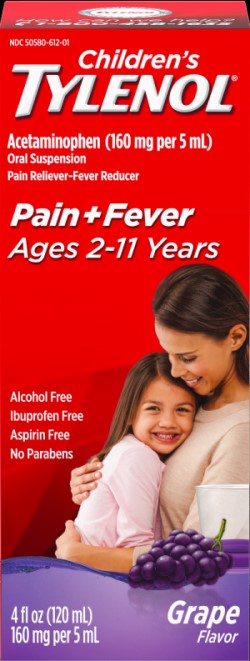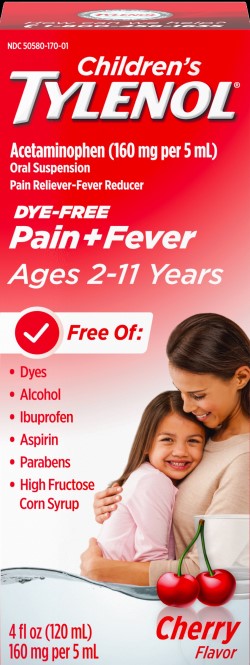Canada Responds To Children’s OTC Pain Reliever Shortage Linked To Consumers ‘Panic Buying’
Executive Summary
Shortage began in August and has increased the onset of cough/cold season due to consumers’ “stockpiling/panic buying” in response to high levels of activity in COVID-19, RSV, seasonal flu and other viruses, according to Canadian Pharmacists Association. Health Canada has approved imports of Haleon and J&J children’s pain relievers.
Relief is expected soon in Canada from a shortage of OTC children’s pain relievers, caused by consumer stockpiling due to concerns about multiple viruses, as Health Canada approves imports of more than 1m products.
The shortage, which began in mid-August and has increased during the fall with the onset of cough/cold and flu season, isn’t linked to supply problems, but to consumers’ “stockpiling/panic buying” in response to high levels of activity in COVID-19, respiratory syncytial virus (RSV), seasonal flu and other viruses, according to the Canadian Pharmacists Association.
 J&J's children tylenol grape, above, and dye-free cherry, below, products in packages that will be available in canada as the country responds to a shortage in children's pain relievers.
Source: J&J
J&J's children tylenol grape, above, and dye-free cherry, below, products in packages that will be available in canada as the country responds to a shortage in children's pain relievers.
Source: J&J
“There have been no disruptions to the manufacturing of children’s acetaminophen and ibuprofen medications,” CPhA said in a 15 November statement. “The current supply challenges are being driven by a significant increase in demand for these products.”
It also noted in an alert for consumers that surging demand “has been ongoing for months” but “a significant increase in media attention starting in mid-August and the onset of cold/flu season has only exacerbated the situation.”
Regulatory agency Health Canada said in a 21 November update that it expects imported ibuprofen products added to the supply to be in retail stores starting by 26 November; importation of children’s acetaminophen products is expected to begin soon.
The imports will help supplement Canadian production already at record highs, according to Health Canada. It points out some companies already are producing approximately 100% more than during the same period in 2021.
The agency, which is urging consumers to purchase only what is necessary, has greenlighted imports of five products manufactured by Haleon plc and by Johnson & Johnson.
Haleon’s Children's Advil ibuprofen liquid formulation in bubblegum and dye-free blue raspberry, manufactured in the US was approved in October for import to hospitals.
Health Canada on 10 November cleared imports for sale at retail locations of J&J’s Children's Tylenol acetaminophen liquid in grape and dye-free cherry varieties manufactured in the US.
According to J&J, Health Canada “permitted a temporary exception” for imports of children’s Tylenol made in the US, which will allow the products to be sold in Canada without required labeling.
US Supply Remains Robust
The increased demand isn’t issue impacting Canada alone as supply challenges have been reported in other countries, according to CPhA.
The Consumer Healthcare Products Association stated its view on the US supply of children's pain relievers on 11 November.
“As flu season begins, CHPA remains in close contact with our member companies who are currently meeting the elevated demand for safe and effective children’s pain reliever products. Our members are focused on safeguarding the US by maximizing product production,” the trade group said.
J&J notes there’s no shortage of children’s Tylenol in the US.
However, according to reports, the products are increasingly harder to find in US cities that border Canada, such as Buffalo and Detroit.
Canadian regulations require nonprescription drug products labeling in English and French. However, J&J’s imports will be labeled solely in English, with labeling information in the French language available online.
While the US products offer the same active concentration at the same weight- and age-based dose levels as Tylenol acetaminophen suspension products approved for sale in Canada, there are differences in product size, inactive ingredients, warnings/precautions and labeling.
J&J says it maxed its production in Canada to increase Tylenol availability, in addition to reallocating some of its global supply to the country.
Health Canada is continuing to work with manufacturers, hospitals, provinces and territories, and associations including CPhA and the Canadian Pediatric Society and Food, Health & Consumer Products of Canada “to help increase supply and implement measures to address the shortage.”
Haleon, J&J and other firms marketing OTC drugs in the US are expected to report high sales growth for children’s and other pain relief and cough/cold products during the current and next quarters as the forecast for cough/cold and flu prevalence is the highest in a decade. (Also see "Strongest US Cough/Cold Season In 10 Years Likely" - HBW Insight, 17 Oct, 2022.)
Demand Drastically Increased
To slow consumers’ panic-driven purchases, CPhA recommends pharmacies impose temporary purchase limits on children’s acetaminophen and ibuprofen products and consider keeping the products behind the counter, in addition to educating consumers and patients on how to manage fever and pain.
The trade group says despite manufacturers upping production 25% to 30%, the spike in demand for the products since August is 200% to 300% above typical sales. “Increased production alone isn’t able to meet the current needs,” it says.
CPhA says the imports should help ease the shortages. It expects bilingual labeling information will be available separate from the actual products in printed and electronic formats when the supplies arrive.
“As more stock comes in, from both regular domestic supply and imported products, and purchasing demand goes down, we are hopeful the supply situation will improve to the point where we can maintain stock at pharmacies once again,” according to the association.
The surge in demand for children’s OTC pain relievers and Canadian regulators’ response tracks with a shortage of OTC alcohol-based hand sanitizers in the US soon after the COVID-19 pandemic began in 2020. Soaring US consumer demand prompted the Food and Drug Administration to publish temporary guidance easing manufacturing standards to encourage additional firms into the supply chain; the period ended in December 2021 and distribution of all products made under the temporary guidance was to end in March. ( (Also see "End Is Near For Distributing OTC Hand Sanitizers Manufactured Under Temporary US Guidance" - HBW Insight, 27 Mar, 2022.)0
However, problems with hand sanitizers made by the pandemic-prompted firms, from mislabeling and violative packaging to sanitizers containing methanol or benzene, emerged soon after their entry to the marketplace and the FDA regularly warned some of those firms about violations and more frequently alerted consumers to their potentially dangerous products. (Also see "FDA, USP ‘Walk Companies Through The Basics’ Of GMPs After Widespread OTC Sanitizer Adulteration" - HBW Insight, 9 Feb, 2021.)
More recently, the FDA in May provided temporary guidance for enforcement discretion to allow imports of some infant formula products after the US supply of powder products was disrupted by the shutdown of a key plant in market leader Abbott’s system due to unsafe levels of bacterial contamination. (Also see "US FDA Plans Streamlining Infant Formula Approval Process To Expand Supply Chain" - HBW Insight, 7 Jul, 2022.)
The agency earlier in November said it stopped accepting requests for enforcement discretion for formula products but the period extends through 6 January and the FDA has provided guidance for firms currently using temporary clearances to work toward becoming fully compliant. (Also see "US Infant Formula Safety Questions Don’t Include Cronobacter National Reportable Disease Listing" - HBW Insight, 17 Nov, 2022.)

